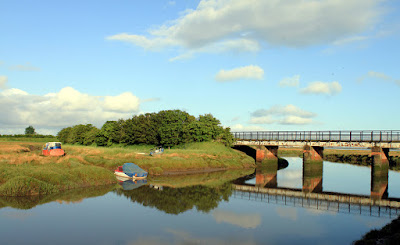Following my recent post about "Seagulls", I am delighted to learn that there are others who do not despise our UK gulls. On the contrary, there are many discriminating people who positively like gulls and value their unique beauty and characterful ways.
From “The Scotsman” 27the July 2015.
"Scottish gulls are getting a positive public relations campaign waged on their behalf.
A group of poets, photographers and artists have teamed up in an effort to salvage the reputation of the brass necked birds. They have created a booklet titled White Wings of Delight, which will raise money for RSPB Scotland when it goes on sale next month.
The booklet features a collection of works with the running theme of “the grace of a delightful bird like a seagull” - an animal that has inspired countless artists and poets for generations. The move by the creative network, based in and around Aberdeen, comes after a string of horror headlines featuring Herring Gulls.
Herring Gull
Gulls have been getting a bad rap in recent weeks due to a series of incidents, including a dog being pecked to death, a starling being swallowed whole, and Aberdeen Football Club being plagued by the nesting nuisances.
Granite City (Aberdeen) residents regularly complain about bold birds nicking food and dive-bombing built-up areas for scraps. Two ‘Robops’ - robotic birds of prey - were unleashed further north in the fishing port of Fraserburgh in 2003 when the booming gull population caused a spate of problems. But Aberdeenshire Council was forced to bin the project after the local gulls got used to the flapping fibreglass falcons - and started sitting next to them. The local authority has spent nearly £200,000 in the last five years trying to combat the pests. Hawk patrols and nest removal work has cost the council a total of £197,979.70 since 2010.
Granite City (Aberdeen) residents regularly complain about bold birds nicking food and dive-bombing built-up areas for scraps. Two ‘Robops’ - robotic birds of prey - were unleashed further north in the fishing port of Fraserburgh in 2003 when the booming gull population caused a spate of problems. But Aberdeenshire Council was forced to bin the project after the local gulls got used to the flapping fibreglass falcons - and started sitting next to them. The local authority has spent nearly £200,000 in the last five years trying to combat the pests. Hawk patrols and nest removal work has cost the council a total of £197,979.70 since 2010.
What’s new - public bodies wasting the taxpayers' money? - Phil
Aberdeen-based publisher Keith Murray helped develop the booklet, which was the brainchild of fellow poet Elizabeth Reinach.
Mr Murray said: “Elizabeth came up with the idea because we both love gulls. Both of us have been told to ‘stop feeding the birds, they are flying rats etc’. But when you consider all the horrors that are happening in the world at the moment you have to wonder why people dislike gulls. There should be respect for all forms of life.”
“So I gathered about 20 poems from different poets, all with a positive look at gulls. Some of my poet friends were quite honest and said that they didn’t like gulls but more replied with super poems.”
Mr Murray and Ms Reinach previously raised nearly £3,000 for a guide dog charity with a similar book. The writers even enlisted the help of politician David Blunkett, who wrote a foreword for the collection entitled Guiding Lights, to help raise money for the Guide Dogs For The Blind Association. They hope to have similar success with their gull-orientated booklet.
Herring Gull
Mr Murray added: “We want to raise money for the RSPB but also to bring attention to the fact that gulls aren’t a creature to be hated. I’ve been feeding a gull who comes to my window, who I have named Sinbad, for 15 years now and around the back window I have another one called Warren.
“I like to feed them at night, they come up to my window every morning at 1am like little white ghosts, and you can look into their eyes and see they’re truly beautiful, and there’s a character to each one of them.”
White Wings of Delight is expected to be published around the middle of August.
It will be available from Books and Beans cafe, the Maritime Museum and directly from Mr Murray by sending a cheque or postal order for £6 (or more) to Keith Murray Advertising, 46 Portal Crescent, Aberdeen, AB24 2SP."
A tale of hope and inspiration in this awful world. Three cheers for gulls!
A tale of hope and inspiration in this awful world. Three cheers for gulls!





















































.jpg)












